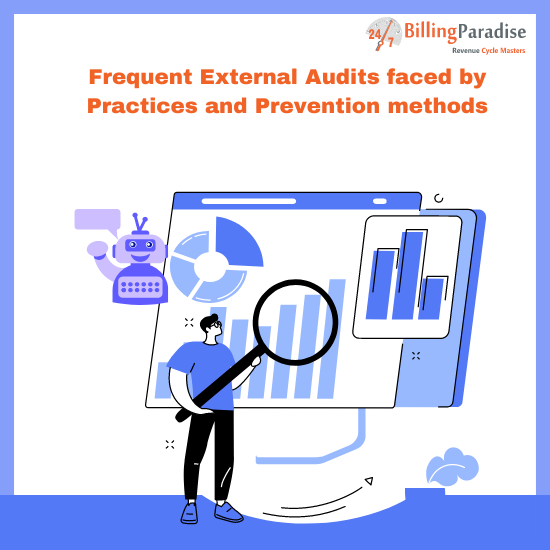Frequent External Audits faced by Practices and Prevention methods
Healthcare audits have been used as a key approach for quality improvement (QI) in healthcare organizations. Quality and safety concerns in healthcare practices have led to increased attention to clinical outcomes and patient satisfaction. Audits involve systematic evaluations of care delivery, identification of areas for improvement, and implementation of changes to enhance overall quality. Despite the benefits of audits, improvements recommended by audits often fail to close the quality gap identified, and there has been little in-depth theoretical analysis of the causal mechanisms that determine the effectiveness of audits in specific contexts.
Audits aimed at improving healthcare can be broadly classified into three categories: External audits, internal audits, and clinical audits. External audits are employed to evaluate the quality system of a healthcare organization based on predefined standards and are carried out by external auditors.
One of the most frequent external audits in healthcare organizations is the external revenue cycle audit, which is typically conducted by an independent third-party auditor to assess the accuracy and completeness of the organization’s financial records, billing and collection procedures, and compliance with relevant regulations and standards. External revenue cycle audits can help ensure compliance with regulatory requirements, identify errors or discrepancies in financial records, and billing/collection procedures, optimize revenue, mitigate risks, and provide benchmarking data for performance improvement.
To conduct a medical audit, the scope of the audit needs to be defined, an auditing team should be assembled, and an auditing strategy should be developed. Electronic health records and bills are critical records to be evaluated during the audit process. All charges captured, codes assigned, and billing reports for each selected case should be investigated. Any discrepancies found during the audit should be discussed, and a meeting should be held between the authorities of each service on the provider side to review the audit results.
Healthcare auditing offers many benefits, such as improving the quality of care delivery, enhancing patient satisfaction, mitigating risks, ensuring compliance with regulatory requirements, optimizing revenue, and providing benchmarking data for performance improvement. Healthcare organizations should consider conducting regular audits to enhance their overall quality and ensure compliance with regulatory requirements. In conclusion, audits should be viewed as a tool for improving the quality of care delivery, rather than simply a compliance requirement. By conducting audits, healthcare organizations can identify areas for improvement and implement changes to enhance the overall quality and patient satisfaction.
























